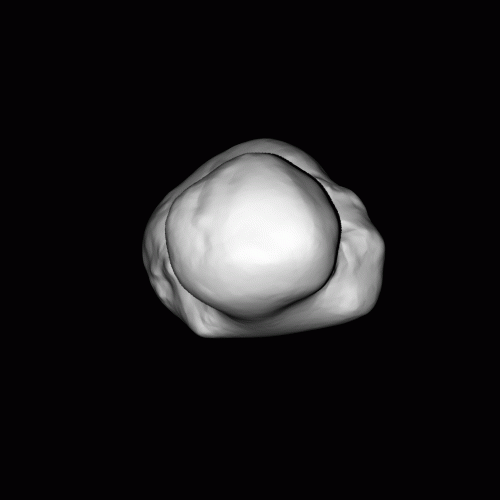OSIRIS images of Rosetta's comet resolve structures at 100 meters pixel scale

In new images of comet 67P/Churyumov-Gerasimenko taken by Rosetta's onboard scientific imaging system OSIRIS, surface structures are becoming visible. The resolution of these images is now 100 meters per pixel. One of the most striking features is currently found in the comet's neck region. This part of 67P seems to be brighter than the rest of the nucleus.
As earlier images had already shown, 67P may consist of two parts: a smaller head connected to a larger body. The connecting region, the neck, is proving to be especially intriguing. "The only thing we know for sure at this point is that this neck region appears brighter compared to the head and body of the nucleus", says OSIRIS Principal Investigator Holger Sierks from the Max-Planck-Institute for Solar System Research (MPS) in Germany. This collar-like appearance could be caused by differences in material or grain size or could be a topographical effect.
Even though the images taken from a distance of 5500 kilometers are still not highly resolved, the scientists feel remotely reminded of comet 103P/Hartley. This body was visited in a flyby by NASA's EPOXI mission in 2010. While Hartley's ends show a rather rough surface, its middle is much smoother. Scientists believe this waist to be a gravitational low: since it contains the body's center of mass, emitted material that cannot leave the comet's gravitational field is most likely to be re-deposited there.

Whether this also holds true for 67P's neck region is still unclear. Another explanation for a high reflectivity could be a different surface composition. In the next weeks the OSIRIS teams hopes to analyze the spectral data of this region obtained with the help of the imaging system's filters. These can select several wavelength regions from the reflected light allowing to identify the characteristic fingerprints of certain materials and compositional features.
At the same time, the team is currently modelling the comet's three-dimensional shape from the camera data. Such a model can help to get a better impression of the body's shape.
Rosetta is an ESA mission with contributions from its member states and NASA. Rosetta's Philae lander is provided by a consortium led by DLR, MPS, CNES and ASI. Rosetta will be the first mission in history to rendezvous with a comet, escort it as it orbits the Sun, and deploy a lander to its surface.
Provided by Max Planck Society





















